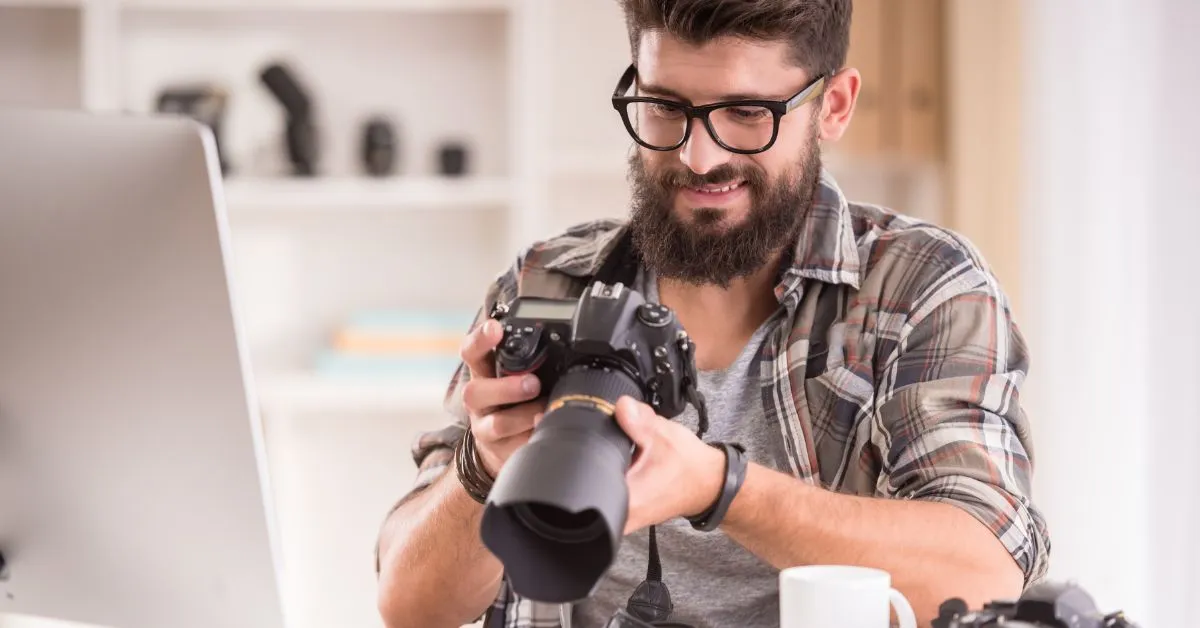If you’re a photographer, you know that online exposure can bring more leads. But how do you make sure your work is seen by the right people?
It’s not enough to just post your photos on social media and hope for the best. You need to use SEO techniques to ensure that your work is found by those who are looking for it.
SEO, or search engine optimization, is a process of improving the visibility of a website or web page in search engine results pages (SERPs). Using specific keywords and phrases can improve your ranking on Google and increase traffic to your site.
In this beginner’s guide, we will teach you the basics of SEO for photographers. We’ll cover everything from keyword research to link building and more.
So whether you’re just starting out in photography or you’ve been shooting for years, this guide will help you get more out of your website so that you can grow your business organically.
Let’s get started!
1. Keyword Research
The first step with SEO is keyword research. You need to find out what people are searching for when they type something on Google. This will help you determine which keywords and phrases to target on your website and in your content.
There are many tools you can use for keyword research. These tools will give you an idea of the search volume for specific keywords and the competition level. I believe one of the most affordable tools on the market is Keysearch. It’s pretty easy to use, and you don’t need to spend a fortune on it.
If you wish to learn how to use Keysearch to find keyword opportunities for your website, read our guide on how to find keywords. Alternatively, get in touch and let us prepare a list of keywords for your website.
When doing keyword research, your goal is to find keywords with low competition, and high volumes. These are the keywords that you can realistically rank for on Google.
Examples Of SEO Keywords For Photographers
If you’re unsure how to find keywords, put yourself in your ideal client’s shoes. What are they typing into Google to find a photographer?
For example, someone looking for a newborn photographer might type in something like “newborn photography near me.”
Some other examples include:
- Wedding photographer in (city name)
- Maternity photographer
- Family photographer
- Headshot photographer
- Real estate photographer
These are just a few examples to get you started. The important thing is that you understand the process of keyword research and how to find keywords that you can rank for.
2. On-Page SEO
Once you have your target keywords, it’s time to start optimizing your website for them. This is called “on-page” SEO, and it’s one of the most important aspects of search engine optimization.
There are many different factors that you need to take into account when optimizing your website for SEO. Here are some of the most important ones:
- Title Tags: The title tag is the name of your page or post, and it appears in the SERPs. It’s important to include your target keyword in your title tags so that Google knows what your page is about.
- Meta Descriptions: The meta description is the short description that appears under your title in the SERPs. Write compelling meta descriptions that explain what your page is about and entice people to click through to your site. Again, make sure to include your target keyword in your meta descriptions.
- Headings: Heading tags are used to structure your content. Google uses these headings to understand the hierarchy of your content. H1 tags are the most important (this is the page title), followed by H2 and H3 tags. You should include your target keyword in your H1 tag and one or two other related keywords in your H2 and H3 tags.
- Images: Whenever you upload a photo to your website, be sure to include relevant keywords in the file name and fill out the alternate text field with a brief description of the image. We also recommend you compress your images for a faster website. You can use this tool for free to speed up your website.
- URLs: Make sure the URL is clean and short. For example, www.example.com/wedding-photography is better than www.example.com/?p=1234 or www.example.com/the-complete-guide-about-wedding-photography. Also, include your target keyword in the URL.
- Content: Write content for your ideal clients. For example, if you’re a wedding photographer, write blog posts about planning a wedding, choosing a wedding photographer, etc. If you’re a food photographer, write about the best techniques for food photography or how to style food for photos.
3. Off-Page SEO
Off-page SEO is all about promoting your website and content on other websites. This helps Google understand that your site is relevant and authoritative.
There are many ways to promote your site off-page, but link building and social media are the most common.
Link Building
Link building is the process of getting other websites to link to your site. This is done by creating high-quality content that people want to link to. You can also contact other website owners and ask them to link to your site.
The more high-quality links you have pointing to your site, the better.
Social Media
Social media is a great way to promote your website and content. Every time you share something on social media, you’re creating a link back to your site. This helps Google understand that your site is popular and relevant.
Make sure to share your content on all the major social media networks, such as Facebook, Twitter, and Instagram.
4. Technical SEO
Technical SEO is all about optimizing the back-end of your website so that it runs smoothly and efficiently. This includes things like site speed, mobile optimization, and indexing.
Site Speed
Site speed is one of the most important ranking factors for SEO. Google wants to deliver the best possible experience to its users, so it favors websites that load quickly.
You can do many different things to improve your site speed, including optimizing your images and using a content delivery network.
Mobile Optimization
Mobile optimization is also important for SEO. Google favors mobile-friendly websites, so it’s essential to make sure your site is responsive and can be viewed on all devices.
Indexing
Indexing is the process of Google adding your website and pages to its database. This is important because if your site isn’t indexed, then it won’t show up in the SERPs.
You can do a few things to ensure that your site is indexed, such as submitting a sitemap and using Google Search Console.
5. Local SEO
Local SEO is all about optimizing your website for local search. This includes things like claiming your Google My Business listing and optimizing your NAP (name, address, and phone number) information.
Google My Business
Google My Business is a free listing that allows you to control how your business appears in local searches. This is important for local SEO because it allows you to add things like your business hours, photos, and even coupons.
NAP Information
Your NAP information is how Google knows where your business is located. This information should be consistent across all platforms, including your website, social media profiles, and directories.
6. Reporting And Tracking
Reporting and tracking are an essential part of SEO. You need to track your progress to see what’s working and what isn’t. Google Analytics and Google Search Console are great tools for tracking your SEO progress.
It allows you to see things like how much traffic you’re getting from organic searches and which keywords are driving the most traffic.
SEO Services For Photographers
Feeling a bit overwhelmed with the information above? You’re not alone. SEO can be pretty daunting, especially if you’re not familiar with all the technical jargon. But don’t worry, we’re here to help!
We can help you with SEO for photographers. We’ll help you choose the right keywords, optimize your website, and get your business ranking high on search engines. With our help, you’ll be able to attract more customers and grow your business.
If you’re interested in learning more about our SEO services for photographers, please contact us today. We’ll be happy to answer any of your questions and help you get started with SEO.
Don’t have a budget to hire someone to help with SEO? No problem! We also offer an affordable SEO course for beginners. By the end of the course, you’ll be able to optimize your website for search engines and have a content strategy to get more leads.
Final Thoughts On SEO For Photographers
SEO is a complex and ever-changing field. But by following the tips above, you can start to improve your website’s ranking on search engines. Remember to focus on things like keyword research, content marketing, and technical SEO.
And if you need help, don’t hesitate to contact us. We offer affordable SEO services for photographers that will help you grow your business.
SEO is essential for any photographer looking to attract more clients and grow their business. Get more eyes on your work with our SEO tips.





